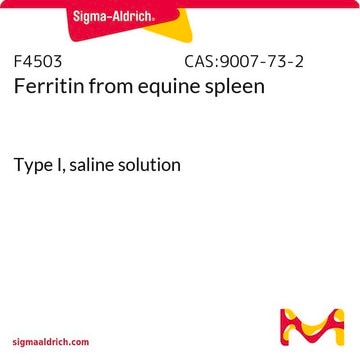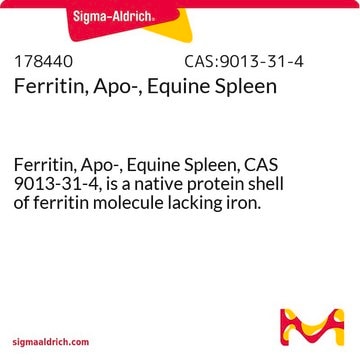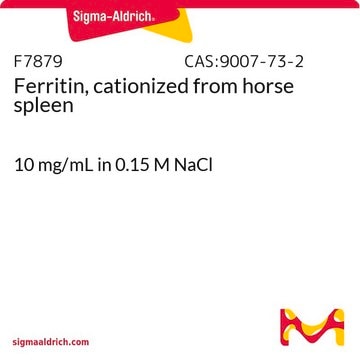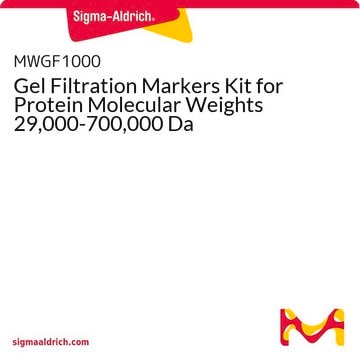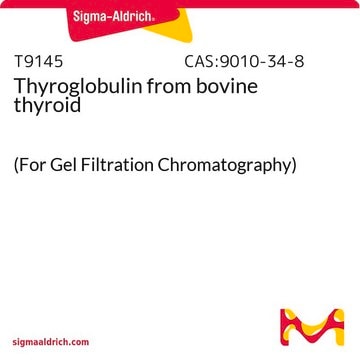A3641
Apoferritin from equine spleen
0.2 μm filtered
About This Item
Polecane produkty
Poziom jakości
sterylność
0.2 μm filtered
Postać
liquid
masa cząsteczkowa
major subunit ML 19,889
minor subunit MH 22,200
native ~481.2 kDa (24 subunits, approx. 20 kDa each)
kolor
clear to slightly hazy, solution
temp. przechowywania
2-8°C
Szukasz podobnych produktów? Odwiedź Przewodnik dotyczący porównywania produktów
Zastosowanie
- to determine its partition coefficients in phase systems
- in NaCl for iron loading of cultured cells
- in in situ liquid scanning transmission electron microscope for imaging the interface of biology and nanotechnology
Działania biochem./fizjol.
Postać fizyczna
Kod klasy składowania
10 - Combustible liquids
Klasa zagrożenia wodnego (WGK)
WGK 3
Temperatura zapłonu (°F)
Not applicable
Temperatura zapłonu (°C)
Not applicable
Środki ochrony indywidualnej
Eyeshields, Gloves
Certyfikaty analizy (CoA)
Poszukaj Certyfikaty analizy (CoA), wpisując numer partii/serii produktów. Numery serii i partii można znaleźć na etykiecie produktu po słowach „seria” lub „partia”.
Masz już ten produkt?
Dokumenty związane z niedawno zakupionymi produktami zostały zamieszczone w Bibliotece dokumentów.
Klienci oglądali również te produkty
Nasz zespół naukowców ma doświadczenie we wszystkich obszarach badań, w tym w naukach przyrodniczych, materiałoznawstwie, syntezie chemicznej, chromatografii, analityce i wielu innych dziedzinach.
Skontaktuj się z zespołem ds. pomocy technicznej